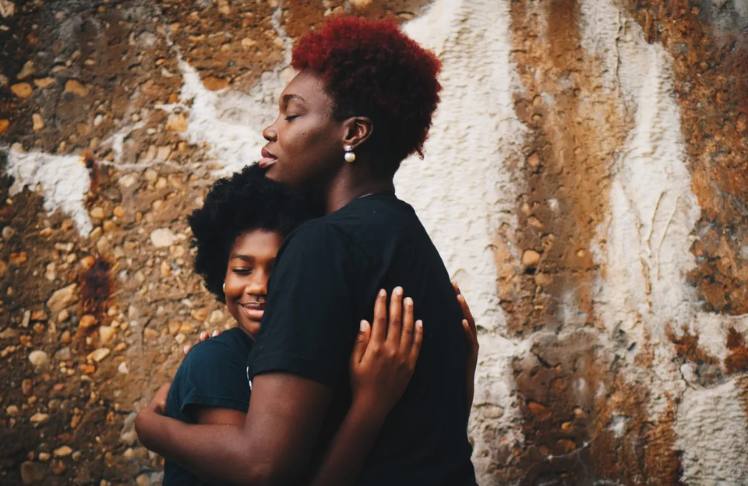
“There are too many dead kids not to assume that could be yours.”
As a Black mother in Washington D.C., Tara Brown says she worries for her 15-year-old daughter on a daily basis. Gun violence and safety are some of her top concerns. Brown is not alone in those feelings.
A recent national survey by the Pew Research Center found that parents’ worries about their children are often linked to how they rate the quality of their neighborhoods. Some of the top concerns for the more than 3,700 respondents include their children being bullied, struggling with anxiety or depression, and getting shot.
Of the Black respondents, 29% of Black parents surveyed rated their neighborhood in the only fair/poor category.
Brown, who was not surveyed for this report, says she would rate her D.C. neighborhood in the same way. And for thousands of Black families across the country, poverty rates, and housing inequity are underlying issues.
29% of Black and Hispanic parents are more likely to rate their neighborhood as only fair/poor
Parents’ rating of their neighborhood varies by race/ethnicity and income
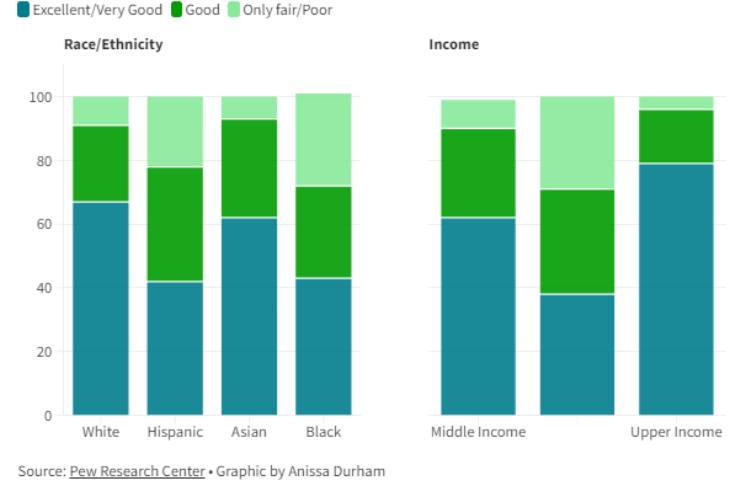
On top of that, with school shootings, bullying, and mental health issues on the rise, parents have valid reasons to be worried. Brown says raising her daughter in Ward 8 in D.C. is difficult. Like many parents nationwide, she struggles with constant feelings of stress and anxiety over the safety of her child.
She’s Just Trying to Get to School
The D.C. school Brown’s daughter attends does not have a school bus to take the kids to school. Jayna, like hundreds of other high school students, takes the metro and bus to and from school. Last Sept., one month into her new school year, an adult man began stalking her.
Brown prepared her daughter for this. She instructs her daughter to tell adults her age, in hopes they will leave her alone. But this stalker continued to come up to her daily, saying things like “I’ve been thinking about you all weekend.” He would follow Jayna every day for months to the bus and try to talk to her.
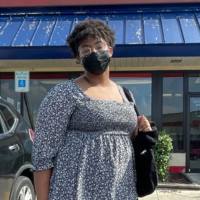
“My daughter has social anxiety. In this case, she was terrified,” Brown says. “The sexual predators didn’t even occur to me. I was more concerned about gun violence and bullies. So, this was just another layer of terror that I deal with every day when she walks out of the house.”
For a while, Brown had her daughter take an Uber to and from school, but it was financially unsustainable. Later, it got to a point where she got Jayna a police escort, in fear of what could happen if she continued to travel alone.
During our interview, Brown’s voice cracked when she took a moment to cry about how afraid she is of her daughter’s safety. What would make Brown feel safe? The answer is simple: a yellow school bus.

When Brown was growing up, the school bus driver was responsible for all the kids who rode the bus — to make sure they got to school and back home safely. Now, no one is watching over the children who have no other option but to take public transportation. This leaves kids with one option: to fend for themselves.
“I want someone to look out for my child and every child. Sexual predators and human trafficking, those things still happen,” she says. “And they tend to happen a lot more often to Black kids because the expectation is that no one’s going to look for them as hard.”
Despite her fears, Brown is working to not allow her fear to raise her daughter. But she says those in positions of power need to do better to ensure the safety of children. Like having a school bus.
“If they wanted to, they could.”
Near-Death Over McDonald’s
In D.C. Wards 7 and 8 have dealt with a history of gun violence. In 2022 there were 203 homicides, and as of April 4, there have been 57 homicides in 2023 according to the Metropolitan Police Department of the District of Columbia. The available data does not detail how these homicides occurred.
But residents continue to speak up about why this violence occurs. A couple of contributing factors are a lack of financial resources allocated to these wards and illegal access to assault weapons.
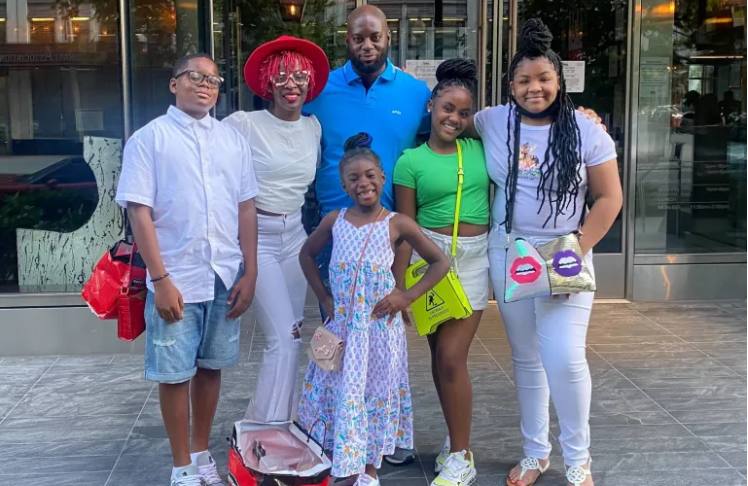
For Talisa Sutton-Stephenson, a Ward 8 resident, gun violence hits too close to home. With a blended family of four children, ages 15, 13, 12, and 7, Sutton-Stephenson and her husband have taken extra precautions against the violence around them, but just recently that wasn’t enough.
On Jan. 3, after her husband, Adrian Stephenson came home from work, their youngest daughter wanted to go to McDonald’s. Adrian took 7-year-old Ava and her 7-year-old cousin to the fast-food restaurant. Ava ordered a 10-piece of chicken nuggets with sweet and sour sauce and a small Sprite to go.
As a game, Adrian had the two girls read street signs on the five-minute drive home. After turning on the street where their home is, shots fired.
“My baby — the way the bullets hit the window, if she wasn’t sitting inappropriately in the seat, she would have been struck directly in her head. She was laying down in her seat,” Sutton-Stephenson says. “Also, for my husband, one [bullet] went through the passenger front window while he was driving.”

No one in their car had physical injuries. But the mental toll had only just begun.
When police arrived at the scene, Sutton-Stephenson felt Adrian wasn’t treated as the victim. 20 minutes later police corroborated that someone was randomly shooting at multiple vehicles and homes in the area. About 30 rounds of ammunition were fired. Sutton-Stephenson says because there were no fatalities the shooting didn’t even make the local news.
“If something happened to one of them, it could have changed the entire trajectory of my family,” she says. “But that’s the city we live in.”
After the shooting, Ava would not ride in Sutton-Stephenson’s car for a month. When Ava got in her dad’s car, she would lie completely down. Sutton-Stephenson says she knew her daughter needed therapy. She called multiple hotlines for help, but “because she wasn’t hit, it was treated as if, for what? Almost like this is business as usual.”
Parents across the country share similar fears of their children being shot. With gun laws varying by state, inadequate mental health background checks, and persistent school shootings plaguing American families, the fear is nothing short of understandable.
32% of K-12 parents surveyed by the Pew Research Center are extremely or very worried about a shooting happening at their children’s school.
32% of K-12 parents are extremely or very worried about a shooting happening at their children’s school
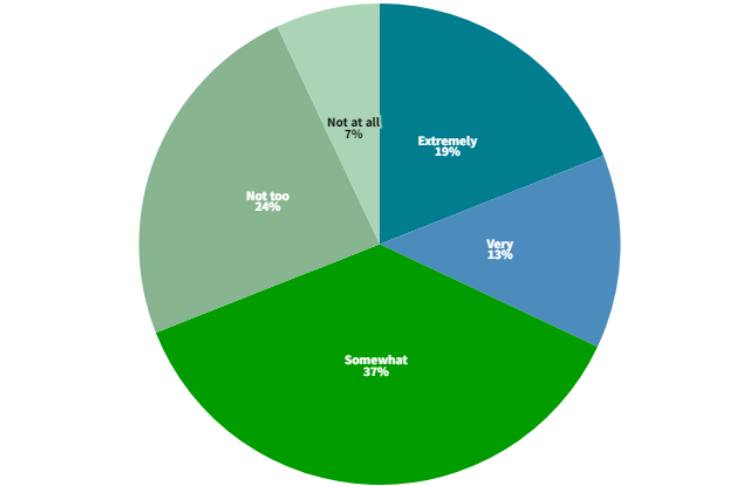
Sutton-Stephenson works two jobs to make ends meet. By day she works as a manager of strategies and logistics for the District of Columbia Public Schools. By night, she works as a sexual assault hotline supervisor for RAINN. Her family lives in a secure building. They pay for parking. Because of her day job, she’s able to have her kids play on school grounds instead of in a public park.
“We pay for all of these things that we think buffer us from what’s happening outside, but it’s not,” she says. “It’s not safe enough.”
Since the shooting, Sutton-Stephenson and her husband have been debating moving out of Ward 8. But finances and a commitment to the community hold them back. As a Washingtonian, and as someone who has worked in youth development for more than a decade, she doesn’t want to give up on her community.
“This is the city I grew up in, I feel indebted, it gave me so much. But I am not willing to sacrifice my kids,” she says. “I can’t save everyone else and not save my own.”
Protecting Children, While Protecting Parents’ Mental Health
Children are typically protected by their parents. But, for the moms interviewed for this story, there is a common thread — the mental health of parents is intertwined with the mental health of their children.
To mitigate the anxiety, Brown goes to a therapist once a month. As much as she wants to “smother her” she’s taking the steps to help her daughter become independent. And giving her opportunities to have more autonomy.
“It’s just super scary,” Brown says. “But I think she’s conscious of my fears and does a really good job of letting me know where she is.”
Parent’s mental health concerns for their children are one of the top three concerns in the Pew Research Center survey. 51% of parents who rated their neighborhood as an only fair or poor area are very or extremely worried about their children struggling with anxiety or depression.
Parents who gave their neighborhood a fair/poor rating are more likely to be concerned their children will face issues like bullying, anxiety, or depression
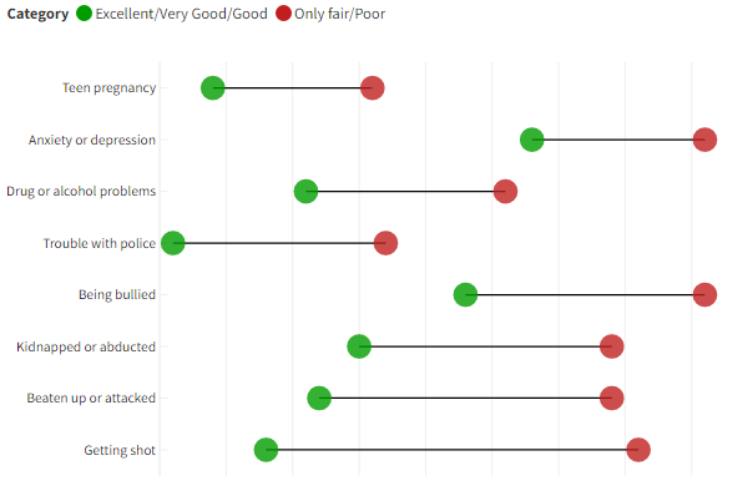
Pew states “Research has shown that mental health disorders are more common among children growing up in “non-supportive neighborhoods”— that is, those where residents do not help each other or watch out for each other’s children.”
“We’re trying to provide a foundation of facts to highlight the experiences and views of parents in the U.S,” says Rachel Minkin, a research associate at the Pew Research Center. “That can inform discussions and other research, other policymakers — our goal is to provide this data … so others can learn and apply it.”

One thing Sutton-Stephenson and her husband do for their children is regular outings. They go to museums, watch movies at the theater, allocate time for the kids to hang out with their friends, and have family dinners at different restaurants. “It’s important to me that they don’t feel the anxiety that I feel constantly,” she says.
But it’s not just about the mental health of her children.
Every Sunday, Sutton-Stephenson has a reset day. She actively practices self-care which comes in multiple forms on a daily and monthly basis. For one, she goes to a therapist three times a month. She has a monthly massage and regularly goes to get her nails done.
“You don’t have to go far to realize, if I’m sitting in a room with 20 Black mothers, we gon’ have the same hope,” Sutton-Stephenson says. “We need to be in the room together. Oftentimes we need each other to push through what we’re going through.”















